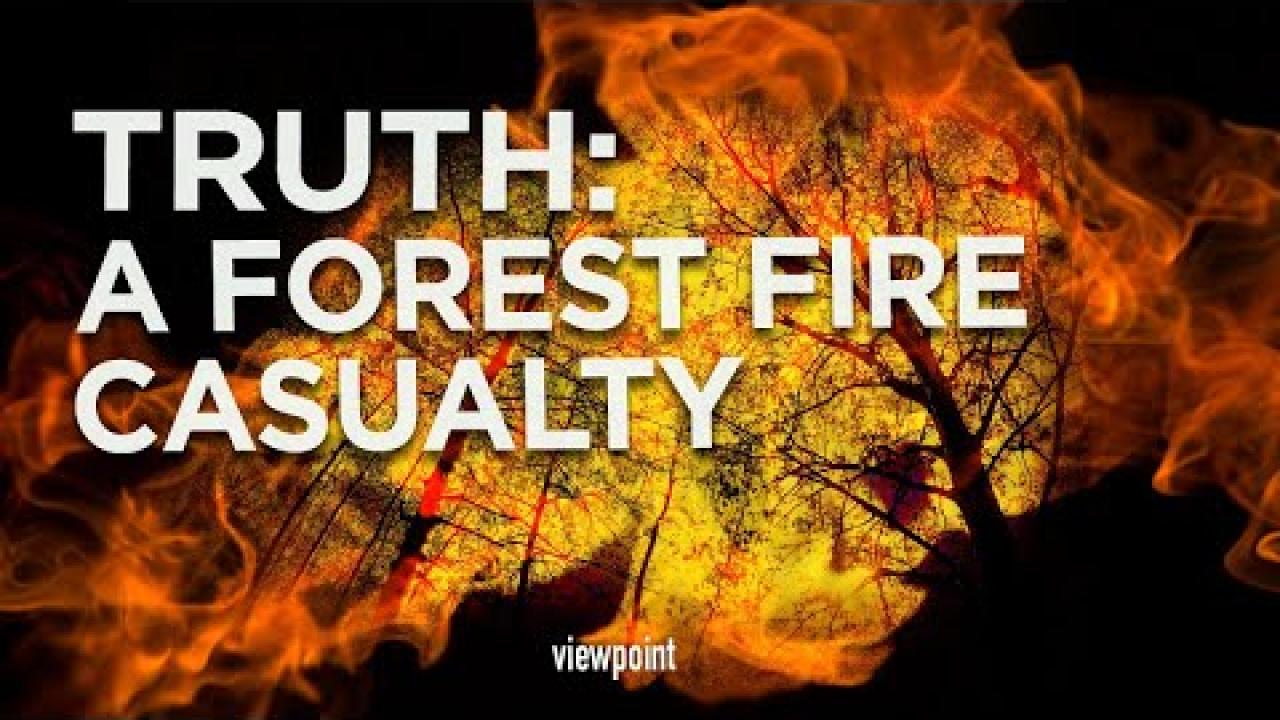
Truth: A Forest Fire Casualty
A June 15, 2023, Fraser Institute article reported that Canadian Prime Minister Justin Trudeau sent the following tweet: “We’re seeing more and more of these fires because of climate change.” It is unhelpful to make or report public statements which are in fact inaccurate. Our society now more than ever needs to ensure the statements that are made are in fact correct. A loss of trust in media or in leadership is not beneficial for any society.
A June 15, 2023, Fraser Institute article reported that Canadian Prime Minister Justin Trudeau sent the following tweet:
“We’re seeing more and more of these fires because of climate change.”
As sincere as people may be, there is in fact no data available that supports the assertion of a linear annual increase in either the number of wildfires or the area of yearly burn. In addition, hard data attests to the fact that forest fire frequency and the area of burn are independent from the volume of fossil fuel utilization.
For example, of the nations in the world, Canada has the third largest forested area, after Russia and Brazil: 347,000,000 ha of the country is woodland. This forest provides a habitat to countless species, as well as being a huge resource for building materials and paper products much needed by the world. If well managed, these fully renewable resources can last indefinitely. It is thus a serious matter when people have the impression that great areas of forest are seemingly being destroyed by fire. How much of this vast forested area does burn on an annual basis? Is that area increasing annually at the present time?
In 2023, fires have been more frequent and consumed more forested area than in previous years. If indeed a progressive climatic warming is the cause, then this trend should be discernible in the records of areas burned over past years. Fortunately, The Canadian Interagency Forest Fire Centre does keep records of acreage consumed by forest fires on an annual basis.
By July 2, 2023, the Centre documented that so far in 2023, about 8.3 million hectares of forest have been burned. This is a record since the Centre started accumulating data. However, when one examines information on burned areas from previous years, one may question if it is indeed an extension of a trend. From their record of fire starts over the past 40 years, the trendline in fact shows a significant decline in the number of fires over that period, with the peak year being 1989.

Similarly, when one looks at the agency’s graph of the overall area consumed by fire, while there is a spike in 2023, the graph does not give any indication of a gradual increase related to the alleged gradual increase in global temperature. The record shows an erratic history, and gives no indication of a worsening situation given a linear increase in global temperature. One also should keep in mind that a majority of wildfires in Canada are caused by humans, not climate change, as reported by Global News on June 8, 2023.

As one can see by comparing the two graphs, the number of fires and the total area burned do not necessarily correlate. Often the amount of area burned is a function of a fire being in a more remote area apart from significant settlements. Primary effort in fire suppression is reserved for fires that are threatening populated areas, with less effort expended on fires that are not placing towns at risk.
On average in Canada, fires will consume about 2.4 million hectares of forest. This amounts to about 0.6% of Canada’s total forested area. Previous to 2023, the worst fire year of which we have an official record was 1991, which saw 7.1 million ha consumed, or 2.0% of Canada’s forest.
Clearly there is no discernible trend of increase in areas burned, as in 2020 the burn amounted to only 0.07% of the total area and 0.4% in 2022. If steady temperature increase is a cause of worsening fires, this is most certainly not supported in the scientific data. In fact, Canada’s very worst fires on record occurred between one and two centuries ago.
In 1825 a single fire destroyed 1.6 million ha in the province of New Brunswick within a couple of days. This amounted to one-fifth of the forest in the province. It is known as the Great Miramichi Fire. It destroyed several towns and villages and many lives were lost.
The single worst fire in Canadian history with regard to area burned is known as the “Great Fire of 1919.” This inferno started in north-central Alberta and burned all the way to eastern Saskatchewan, destroying settlements, farms, and forest—and consuming over 2 million hectares.
Forest fires, especially those that occur in the northern or boreal forest, are in fact essential for forest survival. After a fire in such ecosystems, there is a great renewal of life. Grasses, flowering plants and a young trees—including fire species such as pine that need fire to open their pinecones and release new seeds—all start to grow in a very short time. Such renewal controls plant diseases and releases nutrients for the new generation. Lush new growth brings about increases in animal populations. Fires in the forest area is a natural and necessary part of forest health.
It is unhelpful to make or report public statements which are in fact inaccurate. Our society now more than ever needs to ensure the statements that are made are in fact correct. A loss of trust in media or in leadership is not beneficial for any society.
Please take time to view our video, “Do You Live By the Honour Principle?” You will find the link in the description below.
https://www.fraserinstitute.org/article/forest-fires-truth-going-up-in-flames
https://globalnews.ca/news/9754882/what-starts-wildfires/
https://www.cbc.ca/news/canada/new-brunswick/nb-author-great-miramichi-fire-remember-1.5751761
https://foresthistory.org/wp-content/uploads/2016/12/2015_GreatFireof1919.pdf